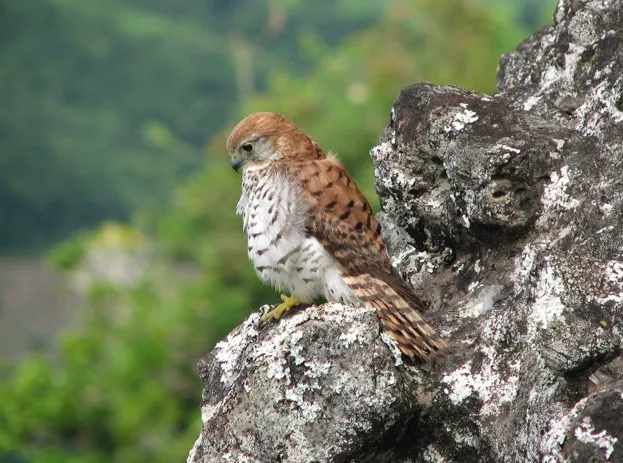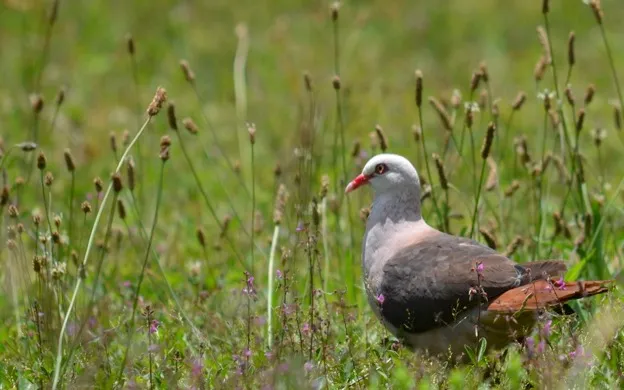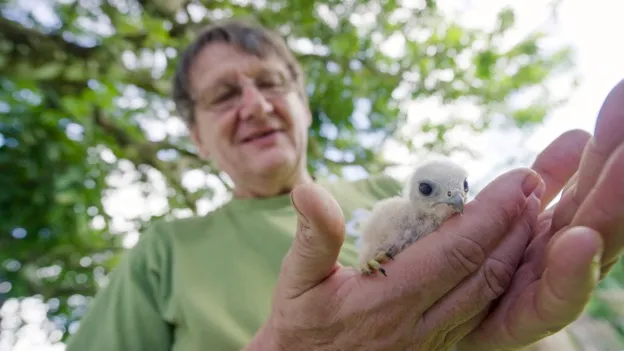Most people in Britain have probably never heard of him, but he’s just been recognised as one of the world’s leading conservationists.
Indeed, it’s claimed he has saved more species from extinction than any other person alive today.
Dr Carl Jones, originally from Carmarthenshire in Wales, has worked on wildlife conservation projects mainly on Mauritius in the Indian Ocean for nearly 40 years.
Mauritius is renowned for having many species that are found nowhere else in the wild, but the impacts of human settlement have put many of them in danger of extinction.
Species that are alive and flourishing today thanks to Carl Jones' work include the Mauritius kestrel, once down to a total population of just four individuals, the pink pigeon, the echo parakeet, plus two species of skink, a gecko, a boa and a fruit bat.

The Mauritius kestrel population is now put at about 400 mature birds. © Sam Cartwright
Jones has been awarded the 2016 Indianapolis Prize: worth $250,000 to the winner this year, previous recipients include the African elephant conservationist Iain Douglas-Hamilton and the field biologist renowned for his work on pandas, snow leopards and many other species, George Schaller.
Jones was a protégé of Gerald Durrell, and with his support, pioneered captive-breeding techniques to save species in the wild.
“It is wonderful to have won this prize and get recognition for what has become a life’s work,” he said.
“It is particularly pleasing considering the amount of criticism that we received in the early days when there was a lot feeling against the use of captive breeding to help conserve Critically Endangered species and also against the intensive management of species in the wild.”

Pink pigeon numbers have risen from 10 in the wild in 1990 to more than 400 today.
Speaking to BBC Wildlife in 2012, he explained the thinking behind his conservation work:
“When looking after animals in captivity, you cure their diseases, protect them from predators and give them plenty of food and opportunities to breed. And that’s exactly what you need to do with an endangered species in the wild.”

Telfair's skink is now only found on the Mauritius island of Round Island. © Nik Cole
Jones has also advanced the use of ‘ecological replacements’ in the field of wildlife conservation – for example, introducing Aldabra giant tortoises (which are native to the Seychelles) to replace the now extinct Mauritius tortoise because they fulfill the same grazing, browsing and seed-dispersal roles.
Jones told BBC Wildlife in 2012 that Durrell’s writing was instrumental in him becoming a wildlife conservationist.
“I devoured all Gerald Durrell’s books when I was young,” he said. “So when I read about the Mauritius kestrel – the world’s rarest bird, down to four individuals in 1974 – I thought, ‘I could save that species.’”

Jones is the scientific director of the Mauritian Wildlife Foundation, chief scientist of the Durrell Wildlife Conservation Trust and also attached to the University of East Anglia’s School of Biological Sciences.
